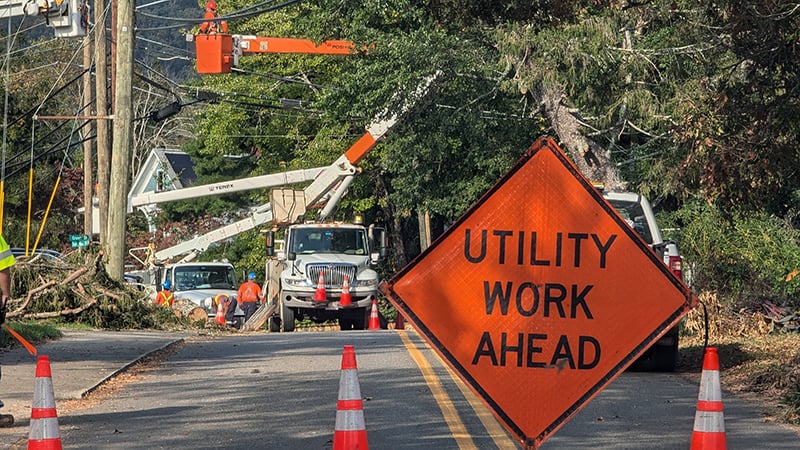One Year Post-Helene, A Look At Duke Energy’s Response
A snapshot by the numbers

In August, we talked to Duke Energy’s manager of emergency preparedness, Jason Hollifield, about his unprecedented test during Hurricane Helene. Here’s a look at how the power company met the nation’s deadliest mainland hurricane since Katrina.
2.6 million
Duke Energy customers in the Carolinas who benefit from self-healing and automated restoration technologies—more than double the 1.2 million served in 2022.
350+
Duke substations damaged by Helene—some of which required extensive repairs due to flooding. Substations take high-voltage electricity from power plants and reduce it to lower voltages so it can be safely delivered to homes and businesses.
14,000
Utility poles used in Helene storm repairs, along with 11,000+ transformers, 31,000 crossarms, and more than 9 million feet (about 1,700 miles) of wire—enough to stretch from Charlotte to Denver, Colorado.
2.7 million
Duke Energy customers in the Carolinas who lost power during Helene. Crews had to repair more than 60,000 locations.
35
Staging sites and base camps in Western North Carolina and Upstate South Carolina to support crews with food, housing, and supplies during Helene restoration.
$1.5 million
in emergency-preparedness grants the Duke Energy Foundation awarded in 2025 to support emergency operations centers and shelters and equip first responders with training, life-saving equipment, and other tools like drones. Since 2020, the foundation has distributed more than $8 million in emergency preparedness grants across its six-state electric
service territory.
23,000+
Field personnel deployed for storm restoration during Helene, including crews from nearly 20 states and Canada.
100
Percentage of Duke Energy employees with a storm role. Anyone can be called to assist during major weather events—to answer phones, set up base camps, or support field crews.







